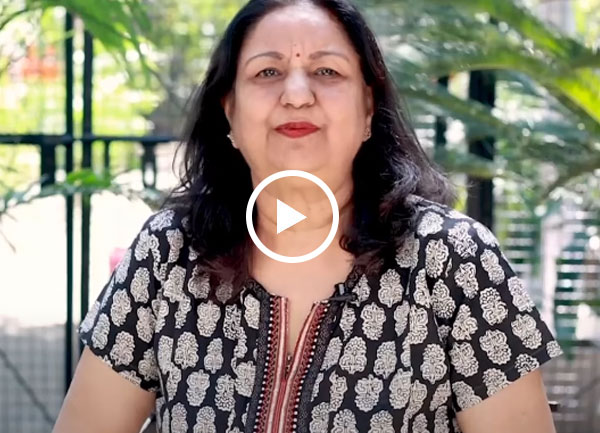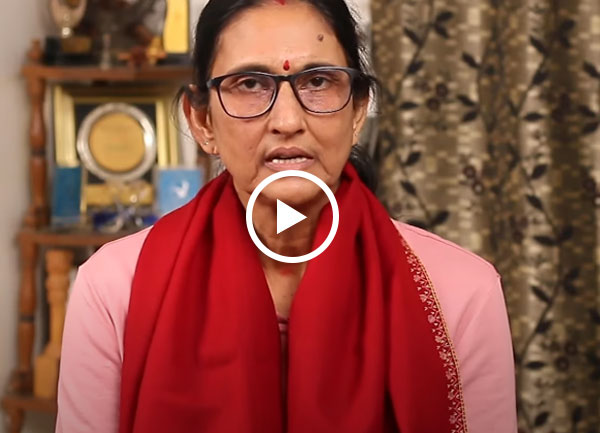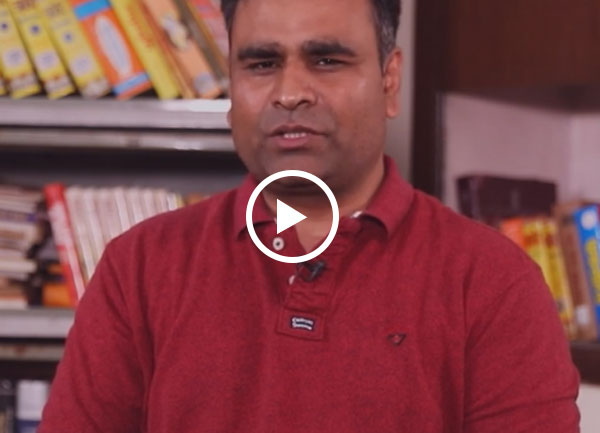 Ayurveda is indeed considered to be the oldest Medical System in the world, dating back to more than 5000 years. It is also true that this form of healthcare is highly personalised. To all the curious readers out there in this internet-verse, this blog intends to break down the process of an Ayurvedic treatment, taking you beyond the buzzword and demystifying the fiction that has engulfed this ancient and highly effective medical system over the past century. To begin with, you need to understand that Ayurveda is not just about fixing the body but rather bringing a state of equilibrium to the mind, body and spirit.
Ayurveda is indeed considered to be the oldest Medical System in the world, dating back to more than 5000 years. It is also true that this form of healthcare is highly personalised. To all the curious readers out there in this internet-verse, this blog intends to break down the process of an Ayurvedic treatment, taking you beyond the buzzword and demystifying the fiction that has engulfed this ancient and highly effective medical system over the past century. To begin with, you need to understand that Ayurveda is not just about fixing the body but rather bringing a state of equilibrium to the mind, body and spirit.
Not to mention, in Ayurveda, eliminating the root of a disease is the primary focus.
Thus, the agenda of an effective, and authentic Ayurvedic treatment is to eradicate the root cause of the problem through natural medicines made from nature's bounty and prepared based on the methodologies mentioned in the ancient texts of Ayurveda, like Charakh, Shushruth Samhitas, books that have never been altered since they were compiled, in the ancient times.
So how does Ayurveda address the root cause of any problem?
You’d be surprised to know that in Ayurveda, the preliminary stage of analysis involves the identification of the imbalance in the Three doshas governing a human body - Vata, Pitta and Kapha. These doshas manifest as imbalances inside our bodies and eventually lead to the development of chronic conditions.Every being exhibits the presence of two dominant doshas, thus defining his/her Prakriti or nature. To learn about the tridoshas in depth, you may refer to the blog Get the Best Ayurvedic Treatments In India.
Now let's delve deeper into the personalised approach of Ayurvedic treatments for chronic diseases.
Wellness And Ayurveda: Going Beyond Medicines
In Ayurveda, wellness is described as the absence of disease. When you are disease-free, you are healthy, vibrant, and at ease with yourself and others. When a human being is inflicted with any disease of the mind or the body, that vibrancy dissipates, and that individual will become uncomfortable with him or herself, and perhaps with others as well.
Ayurvedic healing involves customising a treatment plan that addresses the specific needs of an individual. As the first step, during the first consultation, an expert Ayurveda doctor will study the patient’s medical history and also identify the doshic imbalances through Prakriti analysis, to get closer to the identification of the root cause of the disease.
Thereafter, the doctor will create a daily routine commonly referred to as a Dinchariya that will aim to bring the doshas to a balanced state, by addressing the areas where the patient potentially feels out of balance. This may include, dietary regulations, yoga, meditation, Ayurvedic herbs and even Ayurvedic therapies like Panchakarma if need be.
What Is The Relation Between Gut Health & Ayurveda Treatments?
While Prakriti Analysis and understanding a patient's past health record kickstart an Ayurvedic treatment journey, the process just gets more detailed and personalised in due course of time. For instance, as the next step, a certified Ayurveda doctor might want to assess the gut health of the patient because, in Ayurveda, good digestion is one of the keys to good health. When toxins, or Ama, are minimal, your life essence, or Ojas, can flow unimpeded in the circulatory channels of the body. However, if and when Ama is high, and Ojas is impeded, it can very well lead to a host of health issues.
What this means is that when your body and mind are not bothered by accumulated toxins, everything in life flows more smoothly. Ama is caused by low digestive ‘fire’ or Agni, which means your food is not being properly digested, the nutrients are not being assimilated, and waste is not being efficiently eliminated from the body. This undigested food accumulates in the stomach and intestines where it can produce gas, bloating, and other toxins. It can squash the good bacteria, impeding your metabolic and digestive functions. If the body is unable to flush out the toxins naturally by itself, an individual may start feeling sick, or at least get a feeling of malaise. Additionally, the accumulation of Ama can also be caused because of environmental toxins as well as due to mental anguish. Remember, what happens in the body on a physical level, can also affect us mentally and spiritually, and vice versa.
So to summarize our learning about an Ayurvedic treatment thus far, we’ve learnt that it starts with the understanding of a patient’s health history, followed by identification of the doshic imbalances through Prakriti and Nadi (Pulse) analysis. Thereafter, the doctor may choose to investigate the presence of Ama and lack of Ojas by assessing the patient’s gut health through a series of assessments. Let us take a moment to understand what Digestive fire, Agni is and what are its types.
What Is The Significance Of Digestive Fire ‘Agni’ In Ayurveda?
In simplest words, Digestive fire or Agni is the biological fire that enables metabolism inside a human body. This fire is not just limited to digestion but is also responsible for converting matter into energy, assimilating nutrients, eliminating waste, enhancing immunity and strengthening the body. One must understand that Digestive Fire a.k.a Agni is a very critical part of Ayurveda. So much so, that Ayurveda proudly accepts and proclaims that a balanced Agni can very well promote healthy living, while an imbalanced Agni can turn your body into a host of uninvited, unwelcomed health issues of all sorts.
Moving ahead, allow us to educate you about the three categories of Digestive Fire ‘Agni’ in the human body, as per Ayurveda. Do note, that each of these categories of digestive fire has a specific role to play, respectively. Let us touch base on these roles in brief.
→ Digestive Fire #1 - Jatharagni
This is usually the digestive fire that is within the stomach and duodenum, and responsible primarily for the digestion of food.
→ Digestive Fire #2 - Bhutagni
As the name suggests, these are five Agnis corresponding to the five elements of nature, also known as the Pancha Mahabhutas in Ayurveda. Each of these fires is responsible for wreaking down and metabolising respective elements in our food.
→ Digestive Fire #3 - Dhatwagni
These are seven Agnis, present in the seven tissues also known as Dhatus of the human body, responsible solely for tissue metabolism.
What's The Next Step In An Ayurvedic Treatment?
Usually, a typical consultation with an expert Ayurveda doctor pertains to the above-mentioned preliminary assessments, further which get personalised and vary from case to case, and condition-specific. As experts in Ayurveda healthcare and with over 3 decades of global presence as leaders in authentic Ayurveda treatment in India, Jiva Ayurveda takes the onus to streamline the process and results of Authentic Ayurvedic treatments in India. Building on the key principles of the science of Ayurveda, Jiva follows a 3-fold treatment approach catering to:
The Body (Yukti Vyapsharya)
- Mastering the art of mindful healing
- Leading your intellect to heal your body, mind and soul.
The Mind (Sattva Vajaya)
- Instilling higher dimensions of consciousness
- Unburdening your mind from unwelcoming vibrations
The Soul (Daiva Vyapsharya)
- Traversing the path of faith
- Inspiring trust in divine intervention
Introducing Jiva’s Advanced AyuniqueTM Treatments
For over 30 years, Jiva Ayurveda has been developing its unique approach to healing – Ayunique™. Ayunique™ goes beyond a one-size-fits-all approach, positioning Jiva’s Ayurvedic Treatments heads and shoulders above other players in the global market.
Here's what sets Jiva’s AyuniqueTM apart :
- In-depth consultations: Our experienced doctors take the time to understand your health concerns, medical history, and lifestyle habits.
- Personalised treatment plans: Based on your unique needs, we curate a customised treatment plan that combines the best of traditional Ayurveda with modern medical practices.
- Focus on root causes: We address the root cause of your health issues, promoting long-term healing and preventing future ailments.
- Holistic well-being: Our approach extends beyond physical healing. We consider your mental, emotional, and spiritual well-being to create a holistic path to optimal health.
- Continuous monitoring: We closely monitor your progress throughout your treatment journey, adjusting the plan as needed to ensure the best possible outcomes.
With Ayunique™, you become an active participant in your healing process. Jiva always empowers you with the knowledge and tools you need to manage your health and well-being for a lifetime.
Your Treatment Journey at Jiva Ayurveda Should Appear As Follows
Step 1 → Personalised Consultation
Your path to holistic well-being starts with a detailed consultation with our certified Ayurvedic doctors. They will carefully listen to your concerns and assess your unique needs.
Step 2 → Treatment Plan Creation
Our doctors will then create a customised treatment plan tailored to your needs. This plan may include a combination of therapies, Ayurvedic medications, dietary regulations, and well-being practices.
Step 3 → Ayurvedic Therapies
Based on your personalised plan, doctors may recommend rejuvenation and healing through Ayurvedic therapies, designed to cleanse your body, restore balance, and promote healing. These therapies may be scheduled on different days to make your treatment experience as efficient as possible.
Step 4 → Continuous Monitoring & Re-Evaluation
The progress of every Ayurvedic treatment at Jiva is always measured!
Our expert doctors and health coaches will continuously monitor your well-being using internationally recognised scales and re-evaluate your treatment plan as needed.
Step 5 → Post-Treatment Care
Our commitment to your well-being extends beyond your visits to Jiva clinics. Our doctors will prescribe Ayurvedic medicines based on your current health and provide a personalised diet guide along with a list of relevant home remedies for continued healing and optimal health. Not to mention, our health coaches will keep following up with you to ensure your Ayurveda journey doesn’t halt.
So, if you are looking to switch to holistic well-being and seeking Ayurveda treatment for yourself or your dear ones, Jiva Ayurveda can be the one-stop you haven’t made yet. To book your appointment call at, 0129-4264323 or simply fill in the contact form so that a Jiva Health coach may get back to you at the earliest.





 Prev
Prev






























